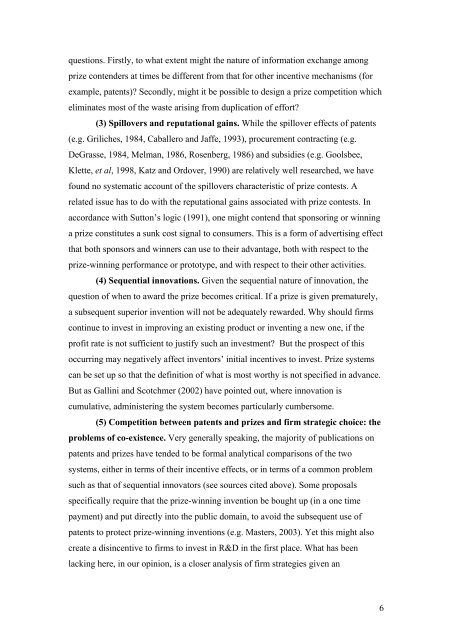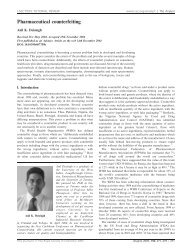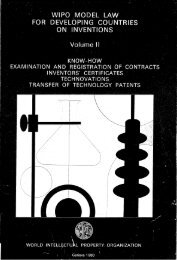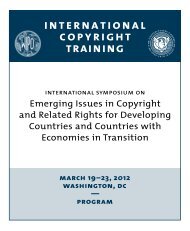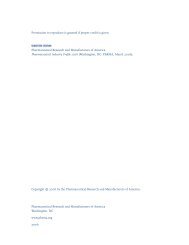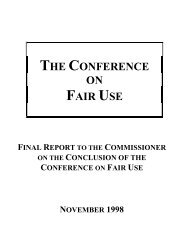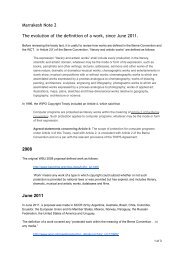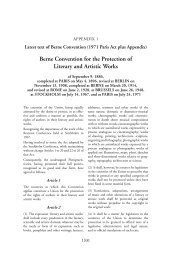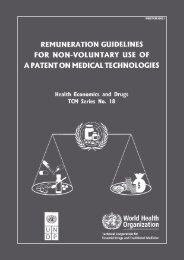how effective are prizes as incentives to innovation? evidence - Druid
how effective are prizes as incentives to innovation? evidence - Druid
how effective are prizes as incentives to innovation? evidence - Druid
- No tags were found...
You also want an ePaper? Increase the reach of your titles
YUMPU automatically turns print PDFs into web optimized ePapers that Google loves.
questions. Firstly, <strong>to</strong> what extent might the nature of information exchange amongprize contenders at times be different from that for other incentive mechanisms (forexample, patents)? Secondly, might it be possible <strong>to</strong> design a prize competition whicheliminates most of the w<strong>as</strong>te arising from duplication of effort?(3) Spillovers and reputational gains. While the spillover effects of patents(e.g. Griliches, 1984, Caballero and Jaffe, 1993), procurement contracting (e.g.DeGr<strong>as</strong>se, 1984, Melman, 1986, Rosenberg, 1986) and subsidies (e.g. Goolsbee,Klette, et al, 1998, Katz and Ordover, 1990) <strong>are</strong> relatively well researched, we havefound no systematic account of the spillovers characteristic of prize contests. Arelated issue h<strong>as</strong> <strong>to</strong> do with the reputational gains <strong>as</strong>sociated with prize contests. Inaccordance with Sut<strong>to</strong>n’s logic (1991), one might contend that sponsoring or winninga prize constitutes a sunk cost signal <strong>to</strong> consumers. This is a form of advertising effectthat both sponsors and winners can use <strong>to</strong> their advantage, both with respect <strong>to</strong> theprize-winning performance or pro<strong>to</strong>type, and with respect <strong>to</strong> their other activities.(4) Sequential <strong>innovation</strong>s. Given the sequential nature of <strong>innovation</strong>, thequestion of when <strong>to</strong> award the prize becomes critical. If a prize is given prematurely,a subsequent superior invention will not be adequately rewarded. Why should firmscontinue <strong>to</strong> invest in improving an existing product or inventing a new one, if theprofit rate is not sufficient <strong>to</strong> justify such an investment? But the prospect of thisoccurring may negatively affect inven<strong>to</strong>rs’ initial <strong>incentives</strong> <strong>to</strong> invest. Prize systemscan be set up so that the definition of what is most worthy is not specified in advance.But <strong>as</strong> Gallini and Scotchmer (2002) have pointed out, where <strong>innovation</strong> iscumulative, administering the system becomes particularly cumbersome.(5) Competition between patents and <strong>prizes</strong> and firm strategic choice: theproblems of co-existence. Very generally speaking, the majority of publications onpatents and <strong>prizes</strong> have tended <strong>to</strong> be formal analytical comparisons of the twosystems, either in terms of their incentive effects, or in terms of a common problemsuch <strong>as</strong> that of sequential innova<strong>to</strong>rs (see sources cited above). Some proposalsspecifically require that the prize-winning invention be bought up (in a one timepayment) and put directly in<strong>to</strong> the public domain, <strong>to</strong> avoid the subsequent use ofpatents <strong>to</strong> protect prize-winning inventions (e.g. M<strong>as</strong>ters, 2003). Yet this might alsocreate a disincentive <strong>to</strong> firms <strong>to</strong> invest in R&D in the first place. What h<strong>as</strong> beenlacking here, in our opinion, is a closer analysis of firm strategies given an6


